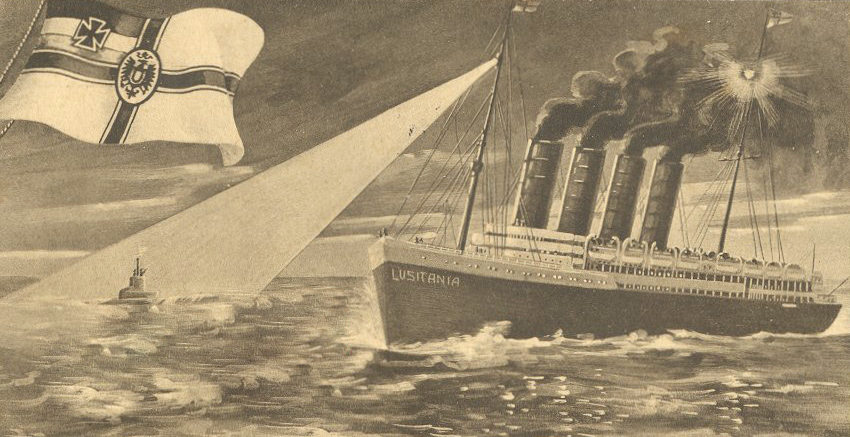
Atlantic U-boat campaign of World War I
The Atlantic U-boat campaign of World War I (sometimes called the "First Battle of the Atlantic", in reference to the World War II campaign of that name) was the prolonged naval conflict between German submarines and the Allied navies in Atlantic waters—the seas around the British Isles, the North Sea and the coast of France.
Initially the U-boat campaign was directed against the British Grand Fleet. Later U-boat fleet action was extended to include action against the trade routes of the Allied powers. This campaign was highly destructive, and resulted in the loss of nearly half of Britain's initial merchant marine fleet during the course of the war. To counter the German submarines, the Allies moved shipping into convoys guarded by destroyers, blockades such as the Dover Barrage and minefields were laid, and aircraft patrols monitored the U-boat bases. Increased ship construction meant the amount of Allied shipping available remained fairly stable.[1]
The U-boat campaign was thus not able to cut off supplies before the US entered the war in 1917 and in later 1918, the U-boat bases were abandoned in the face of the Allied advance.
The tactical successes and failures of the Atlantic U-boat Campaign would later be used as a set of available tactics in World War II in a similar U-boat war against the British Empire.
1916: In support of the High Seas fleet[edit]
1916 was a year of political struggles between opponents and proponents of unrestricted submarine warfare. Reinhard Scheer became the commander of the High Seas Fleet, and as an effort to "blackmail" command into adopting unrestricted submarine warfare, refused to use his submarines in any sort of limited commerce raiding campaign[22]. Thus German Navy returned to a strategy of using the U-boats to erode the Grand Fleet's numerical superiority by staging a series of operations designed to lure the Grand Fleet into a U-boat trap. Due to the U-boats' poor speed compared to the main battle fleet these operations required U-boat patrol lines to be set up, while the High Seas fleet manoeuvred to draw the Grand Fleet to them.[23]
Several of these operations were staged, in March and April 1916, but with no success. Ironically, the major fleet action which did take place, the Battle of Jutland, in May 1916, saw no U-boat involvement at all; the fleets met and engaged largely by chance, and there were no U-boat patrols anywhere near the battle area. A further series of operations, in August and October 1916, were similarly unfruitful, and the strategy was abandoned in favour of resuming commerce warfare.
Renewed orders in October suggested that unrestricted submarine warfare may come at some point in the future, but commerce attacks had to operate under cruiser rules for now. To the consternation of Scheer, operating in this way turned out to be a great success, with around 1.4 million tons sunk in less than four months. Only 4 submarines from the High Seas Fleet were lost, due solely to mines or accidents[24][25]. According to German estimates, Scheer's intransigence cost Germany the opportunity to sink 1.6 to 3 million tons of Allied shipping[26].